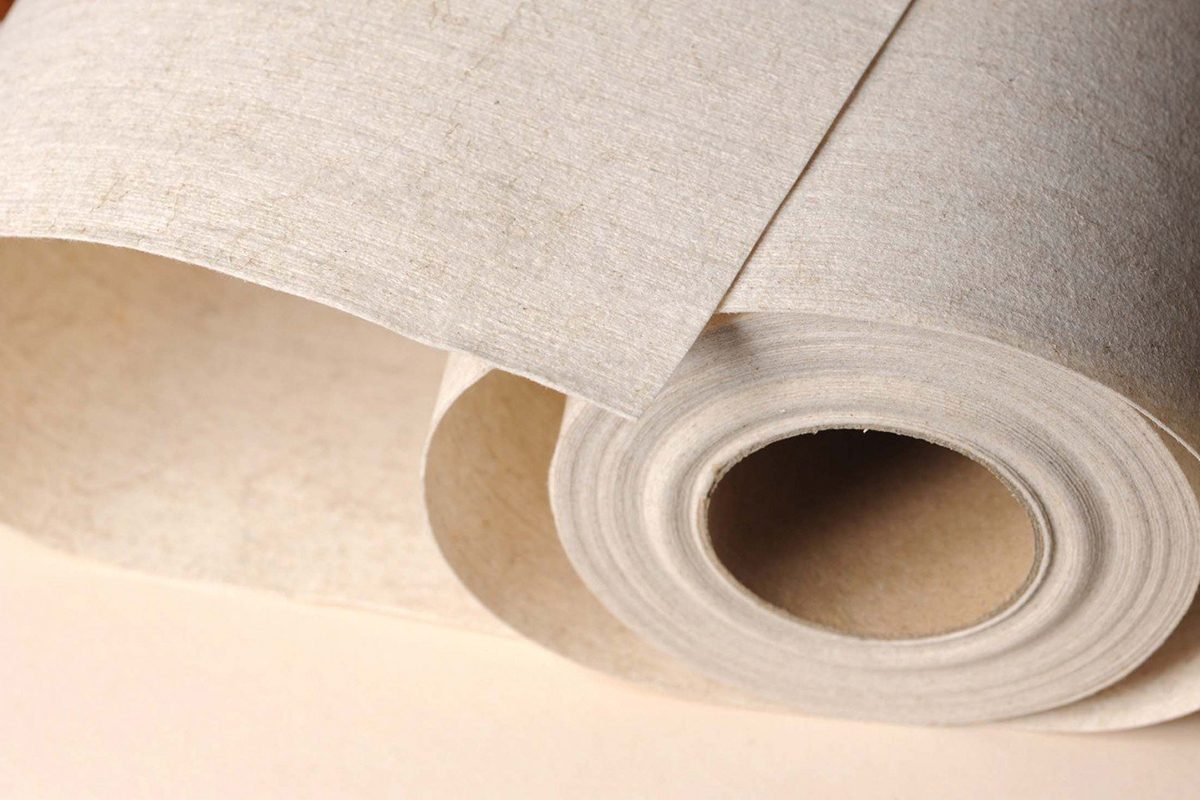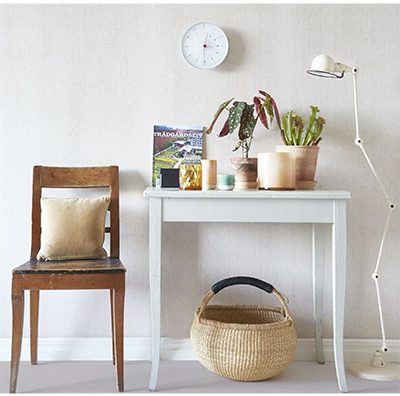
A German firm is offering what it claims is the first truly compostable wallpaper (as in 100% compostable).
“Veruso Lino is the first fully compostable wallpaper,” says the firm, Wallpaper from the 70s. And it consists “entirely of plant-based raw materials which require only a very limited amount of water to grow.”
A production process is used that combines felting with needles and “a hydro-entangling process”, removing the need for conventional binding agents. The result is said to be a top-quality, extremely robust wallpaper material which is also pleasant to the touch. No artificial dyes are used, seemingly, providing “a warm, neutral, natural hue”. The product is described as having a delicate structure, with plant fibres partly visible.
What exactly is different about it?
Most wallpapers consist of paper or non-woven materials, as Wallpaper from the 70s explains in its literature. The convenient adhesive properties of modern non-woven wallpaper models are due in part to the addition of synthetic fibres. This makes recycling impossible, and old non-woven wallpaper usually ends up in landfill or waste incineration facilities. All reusable materials contained in those wallpaper types is irretrievably lost. In addition, the incineration process produces CO2.
Industrial dyes are used in the production process of paper-based wallpaper and there are usually traces of adhesive present after removal, rendering this type of product non-recyclable too.
Veruso Lino is seemingly quite different, and can be discarded on a compost heap without hesitation, and can be expected to have “completely broken down and decayed within a few months”. Its main components are flax (65%) and viscose from sustainable wood pulp (35%).

Flax fibres (also known as linen) are amongst the oldest textile fibres known to man. As the firm says, the cultivation of flax is very water-efficient and produces no waste as all by-products can be
utilised. The flax used for Veruso Lino grows in Normandy, in northern France. There’s a long tradition of growing flax in the region and it is well known for its large fields with bright blue
flax flowers. Flax fibres are particularly well suited for wallpaper production as they are bactericidal, almost completely antistatic, and dirt-repellent.
Viscose from wood fibres is used as a supporting raw material, since a wallpaper made entirely of flax would not adhere to the wall. While this might sound like a product of the chemical industry Wallpaper from the 70s says it consists of textile fibres of natural origin which are obtained from wood and transformed during a special manufacturing process. The fibres are produced by the Lenzing company in Austria. “Thanks to a closed cycle approach, the production is particularly kind to the environment,” says the firm. The wood is from sustainable forestry and fully FSC-certified.
A number of other useful qualities are attributed to the wallpaper, including sound absorption, heat insulation and durability.
On sound absorption, Wallpaper from the 70s highlights “the special consistency of the wallpaper material”, which lends itself to absorbing sound waves created within the room, providing a measurable noise-reducing effect.
It also has heat-insulating qualities, since it is about 0.5mm thick, and air is trapped within the flax and viscose fibres.
Other features include humidity regulation, seemingly boosted by the fact the wallpaper absorbs room humidity (steam). “As it releases the moisture when the ambient air becomes dryer, it actively contributes to a healthy room climate,” says the firm.
On the durability aspect, the firm says Veruso Lino is produced with an emphasis on saving resources and ensuring a long life span. But when it does have to be removed, it can seemingly be pulled off in a dry state or after soaking with a damp sponge.
And it seems to score well on low flammability, partly attributed to its non-reliance on chemical additives. According to the European fire classification standard EN 15102+A1:2011, Veruso Lino complies with fire safety class B-s1, d0. This means that the wallpaper is suitable for public premises, offices and hotels. And the firm says the relevant certificate can be made available upon request.
Is it easy to hang?
Wallpaper from the 70s says Veruso Lino can be put up with little effort and without previous wallpapering experience: “Simply apply the adhesive paste directly to the wall and then put up the dry length of wallpaper on the pasted wall area.” But the firm adds that, in order to ensure compostability, it is important to use an organic wallpaper paste that meets ecological requirements. “For this purpose, we recommend using our special organic adhesive which exclusively consists of pure cellulose.”
And there are seemingly no health risks. “Veruso Lino is produced from environmentally friendly flax and viscose. There are
no other components and [it] does not produce any exhalations.” It has seemingly undergone extensive laboratory testing, receiving the certification “STANDARD 100 by OEKO-TEX”, which is recognised worldwide.
The firm has an extremely detailed and colourful website – www.wallpaperfromthe70s.com – which includes a large number of customer pictures, seemingly taken from locations around the world.








